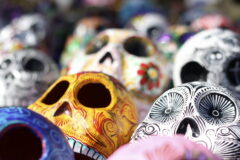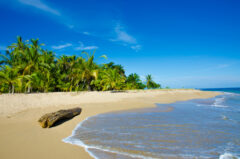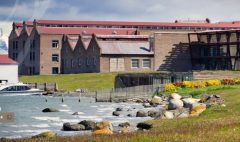Rio and the Costa Verde

Rio de Janeiro can justifiably claim to have the most beautiful natural setting of any city in the world.
Surrounded by imposing conical granite peaks that tower above jungle-clad mountain slopes, Rio’s expansive white sand beaches arc their way around the glittering Guanabara Bay, host to hundreds of tropical islands.
Founded in 1567, the ’cidade maravilhosa’ (The Marvellous City) Rio was once the colonial capital and pre-eminent city in Brazil. Today, it is undoubtedly the country’s capital of tourism, a modern city of around 8 million cariocas, whose prime attractions lie not in its colonial heritage, but in its natural environment. The fabulous beaches, such as the world-famous Copacabana and Ipanema, are a way of life to most cariocas, and the place to jog, work out, play football and even do business.
The majestic Sugar Loaf mountain is probably the best-known landmark in the bay, offering fantastic views from its cable-car, matched only by those seen from the Christ the Redeemer statue on top of Corcovado, a 710 metre high, hunch-backed peak that rises vertically out of the verdant Tijuca rainforest reserve.
Other Rio highlights include the Botanical Gardens, the bohemian colonial district of Santa Teresa, the legendary Maracaná football stadium and the outlying beaches of São Conrado and Barra, over which the more adventurous visitor can hang-glide! Rio is also home to the ’biggest party on earth‘- the Carnival. The ultimate manifestation of Brazil’s Dionysian popular culture, it is an outrageous five-day spectacle of dancing, singing and parading through the streets to the pounding rhythms of samba.
Stretching out to the south west of Rio is a stunning 270km long coastline known as the Green Coast (Costa Verde). It contains some of Brazil’s most dazzling scenery - a unique mix of mountains, rainforest, beaches, cliffs, tranquil lagoons and tropical islands. While in some places the environment has been blemished by recent industrialisation, much of the region and surrounding islands have now been protected, including the idyllic island of Ilha Grande, once a safe haven for pirates, now home to some of Brazil’s most unspoilt beaches.
Another highlight along the Green Coast is the delightful colonial town of Parati. Declared a UNESCO World Heritage Site in 1966, it is undoubtedly one of the colonial jewels of Brazil. Founded in 1660, Parati earned its fame and fortune during the 18th century gold rush of Minas Gerais. But the boom was not to last long and Parati has remained a provincial backwater ever since - its uneven cobble-stone streets, opulent white-washed mansions and ornate churches seemingly trapped in a time warp. Many of the finest colonial homes and courtyards have now been converted into delightful art galleries, handicraft shops, cafes and restaurants ".
Tim Murray-Walker, former JLA Marketing Manager
Tailor-made holidays
Flexible, custom-made holidays to Latin America created to match your exact requirements: our tailor-made itineraries are as unique as the clients for whom they are designed.
Design my tripPapagaio
Your edit for Latin American inspiration
Our exciting range of articles on Latin America explore everything from iconic destinations and lesser-known cultural gems to delicious traditional recipes. You’ll also find exclusive travel tips, first-hand client reviews and the chance to get your personal questions answered by our travel experts.
View Extraordinary Inspiration






































